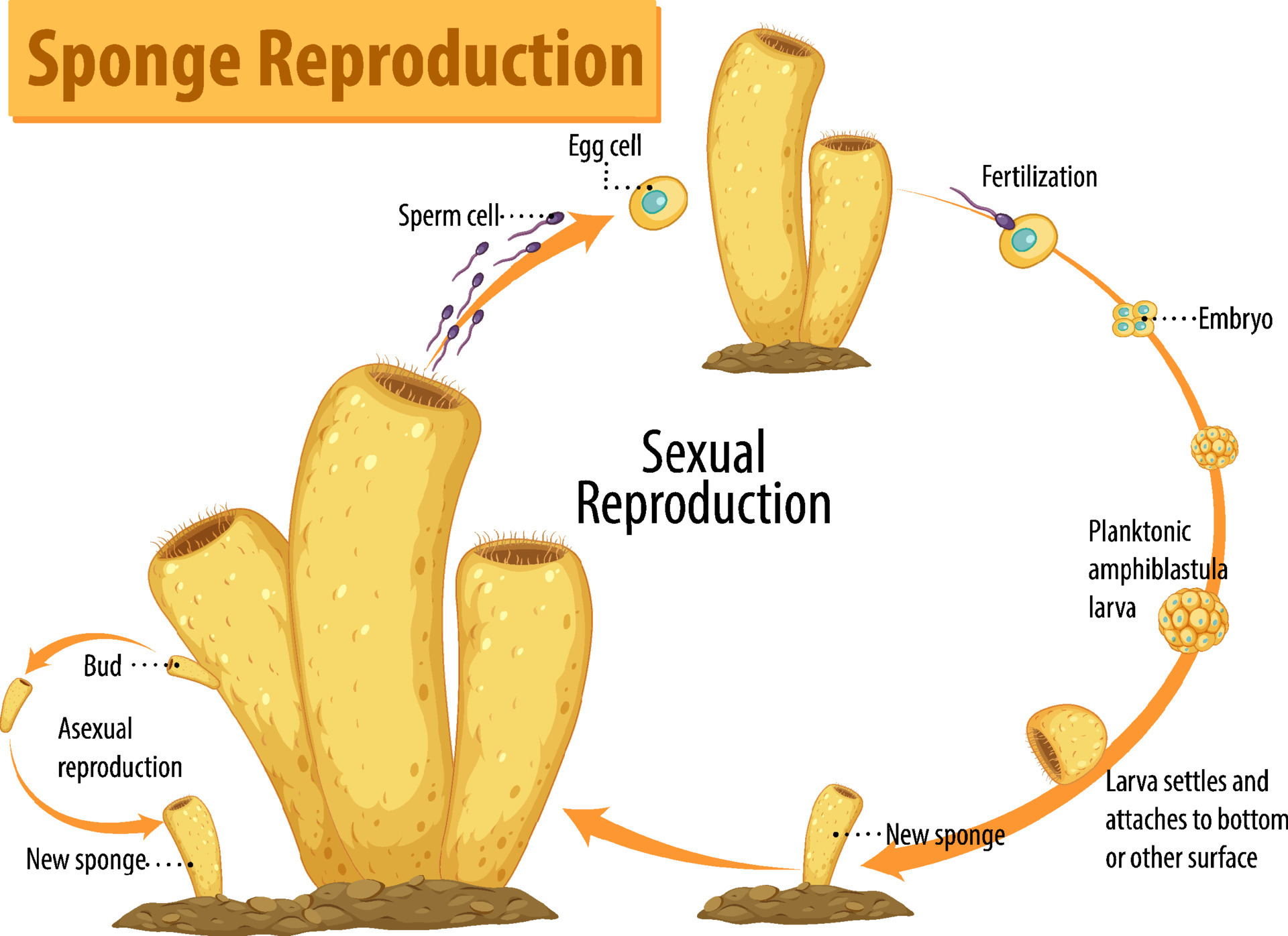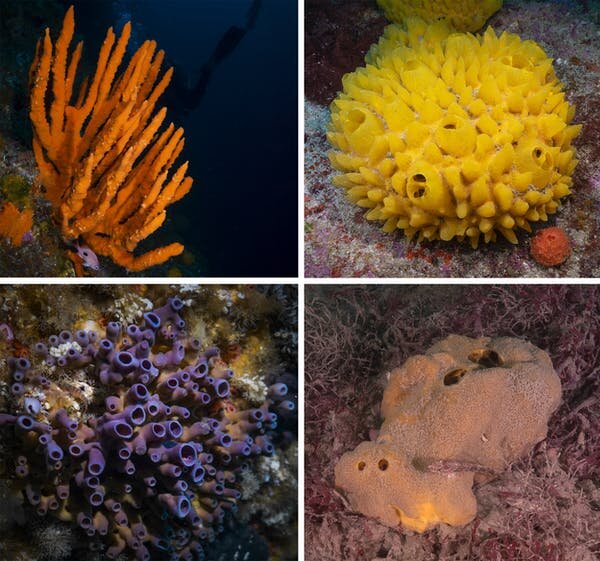When you think of sponges you probably think about the sponge in your kitchen. Whether you want to believe it or not, your kitchen sponge may have originally been a marine sponge.
It belongs to phylum Porifera. They are simple animals with no mouth, muscles, heart or brain. They are sessile, meaning they can't move from one place to another, like other animals can. Like most plants, sponges are animals that only grow in one place. Because so few creatures consume sponges, they have a relatively long lifespan. Some types have been found to live over 200 years.
What do they look like?
Pores are microscopic openings in the sponge's body that allow the passage of food, gases, and water. Sponges are shaped like a tube with the end stuck to an object like rocks. The open end is called the osculum and the interior is the spongosil.
Did you know? that our kitchen sponges are actually really designed from the sea sponges. It is not just a coincidence after all.
Body Types
Sponges have three body types: the Asconoid, Syconoid and Leuconoid. Asconoid and Syconoid are vase-like and Leuconoid is shaped kind of like a rock or a lump.
What are sponges made of?
Basically, they're called the simplest animals. Because sponges have only four types of cells:
Choanocytes
Help in sponge's digestion..Pinacocytes
Make up the pores.
Flat epidermal cells
Line the outside of the sponge and form its skin
Amoebocytes
Carry out many of the sponge's functions, such as transport of nutrients secretion of the spicules and production of the gametes.
And that's all of them. No cells for the brain or heart because they don't have any.
The tallest sponge can grow as tall as a fridge and they can live about 200 years too. Sponges are also considered multicellular colonies, that means they can be placed in a blender and the remaining living cells will just reform themselves into another sponge. If several species of sponge are mixed together, each will individually recombine.
Each of the cells that make up its body is independent, that means even when a sponge "eats" each cell works on its own to digest the food.
How do they reproduce?
Sponges have both abilities to reproduce. It can reproduce either sexually or asexually.

In sexual reproduction, sperm is released from a sponge and floats through the water, where it is taken into a female sponge and internal fertilization occurs. That means even if they're far away from each other, they can still make their babies.
Asexual reproduction in sponges is through budding, where a small piece of sponge falls off of the main sponge and grows into a new one, also called a Gemmule. It is a part of a sponge that falls off when they feel that someone want to harm or eat them so that they still live even if their main body dies. In other words, they have tremendous regenerating powers.
Lifestyle of sponges
Most of them live on the ocean floor. All sponges are carnivorous. Their favorite food are the crabs. When a crab tries to pass across a sponge, the sponge catches them with the help of Velcro-like structure called Spicules. They also feed by filtering microorganisms from the water, using their pores. They don't usually move and just stay still, but if they do they can only move about 3 millimeters a day. Sponges also live in quite clear waters because if there are strong waves of water their pores might get blocked and then they can't eat that away.
For us (humans) they are not really that useful because we cannot eat them like the fishes. They don't do us any harm either they can be somehow useful in their own ways and they're just there being the simplest animal.


